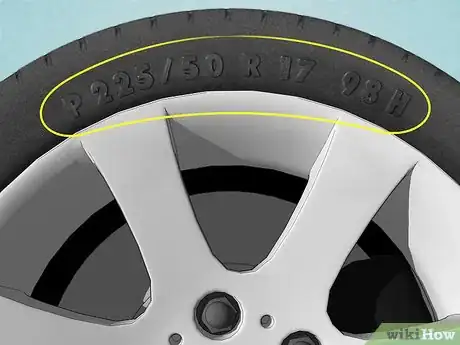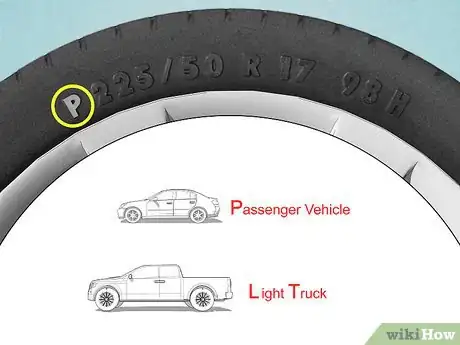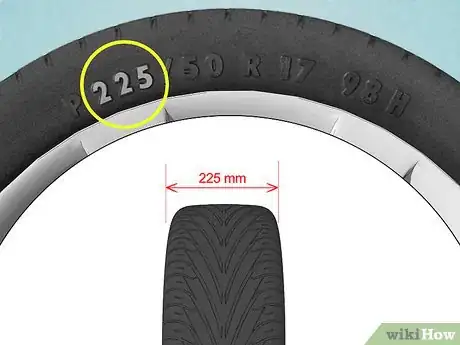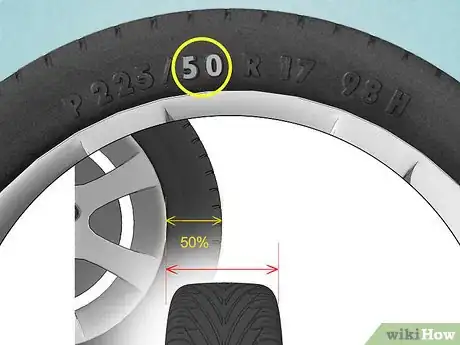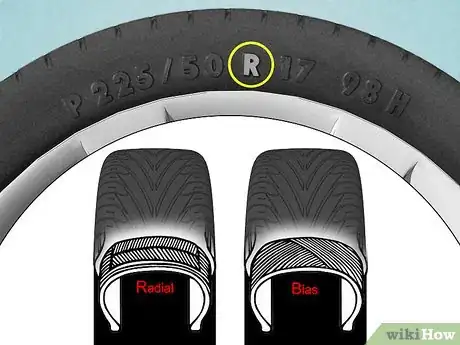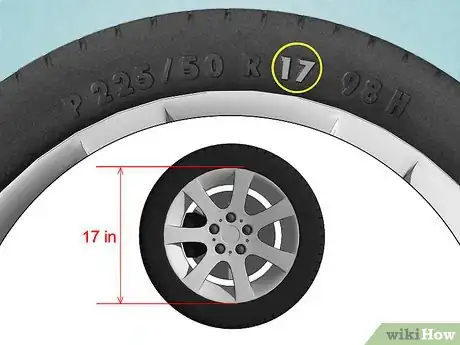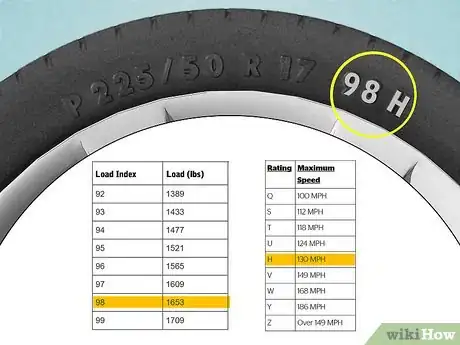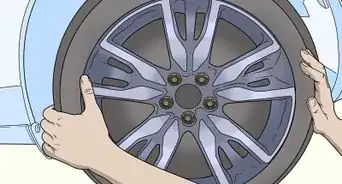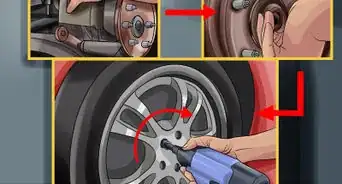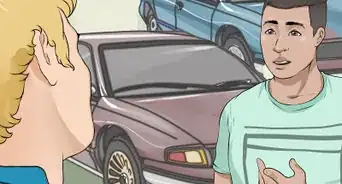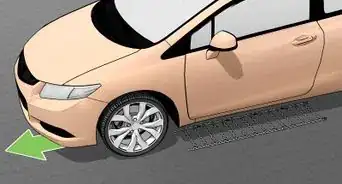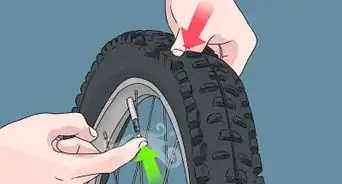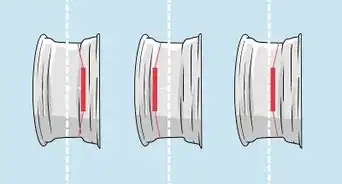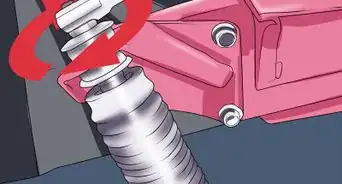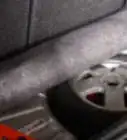This article was co-authored by Howard Fleischmann and by wikiHow staff writer, Sophia Latorre. Howard Fleischmann is an Automotive Tire and Repair Specialist and the CEO of Community Tire Pros & Auto Repair, with ten locations throughout Phoenix, Glendale, Yuma, and Casa Grande, Arizona. Howard specializes in full-service auto repair and tire replacement and care for domestic/imported vehicles and large trucks. Howard’s dedication to Community Tire Pros & Auto Repair has earned their team multiple awards and features including the 2021 Phoenix Magazine AZ State 48 “Best of the Best!”, the 2020 “Best of Phoenix” in Auto Repair, the 2013 Master SBD award, the 2013 National “Top Shop” award by Tire Review, the 2012 Diversity Champions Phx Business Journal, the 2009 BBB Ethics award, the 2008 Phx Chamber of Commerce Impact Award -” Small Business of the Year”, and the 2008 ASU Spirit of Enterprise award. Howard is often referred to as “The Car Guy” for local TV stations and is a regular on TV’s Channel 3 Sunday, Good Morning Arizona monthly.
This article has been viewed 69,781 times.
You may need to know the size of your tires for various reasons, such as for a spare tire or when purchasing wheels, rims, or snow tires. However, measuring the tire size manually with a tape measure will not give you accurate results. Luckily, your tire size is easy to figure out. Simply read the series of letters and numbers printed on the tire sidewall—all the information you need is right there!
Steps
Understanding the First Half of the Series
-
1Find the series of numbers on the sidewall. Tires are manufactured with the tire size printed on the sidewall. The sidewall is the outer wall of the tire, rather than the tread that contacts the road. The size should be printed underneath the tire manufacturer name, just above the rim of the tire.[1] [2]
- For instance, the series may look like this: P 225 / 50 R 17 98 H
-
2Recognize that the first letter denotes the service type. On some tires, the series of numbers begins with a letter. “P” stands for “P-metric” and denotes a passenger vehicle.[3] “LT” stands for light truck, “T” means temporary spare, and “C” stands for commercial. If you're purchasing a spare or new tire, you'll need to choose the same service type as the rest of the tires.[4]Advertisement
-
3Note that the first 3-digit number identifies the tire width. The 3-digit number before the slash denotes the tire width, which is measured from sidewall to sidewall and corresponds to the tread that contacts the road. The measurement is given in millimeters, and all 4 tires must have the same width.[5]
- For instance, if the first number is 225, the tire tread is 225 mm wide.
-
4Understand that the following 2-digit number is the aspect ratio. The numbers after the slash indicate the aspect ratio, which compares the tire's section height with the tire's section width.[6] If you're replacing only 1 tire, make sure it has the same aspect ratio as the others.[7]
- For example, if there is a “50” after the slash it means the tire's section height is 50% of the tire's section width.
Figuring out the Second Half of the Series
-
1Understand that the next letter corresponds to the tire casing. After the aspect ratio, a single letter will be listed that denotes how the tire was constructed. “R” means radial construction, “B” stands for belted bias, and “D” means diagonal bias construction. Choose a spare or new tire with the same casing and construction as the rest.[8]
-
2Recognize that the next 2-digit number tells the rim diameter. After the letter, there will be a 2-digit number. This number gives the measurement, in inches, of the rim diameter, which is essential to know if you're getting new rims or wheels.[9]
- For instance, if the number is 17, your rims are 17 inches (43.2 cm) in diameter.
-
3Note that the last combination is the load index and speed rating. The last combination of letters and numbers is called the service description. The load index refers to the load-carrying capabilities of a properly-inflated tire, while the speed rating tells you the maximum speed the tire can handle.[10]
- The load index number corresponds with a load index chart, and does not tell you the weight in pounds. For instance, a load index of 98 can carry 1,653 pounds.[11]
- Speed ratings are lettered A–Z and correspond to a speed rating chart. For example, the letter H indicates a maximum speed of 130 mph.
Community Q&A
-
QuestionWhat is the difference between 185/14 and 195/14?
 Community AnswerThe larger number just represents the distance from bead to bead, so 195/14 would be slightly larger.
Community AnswerThe larger number just represents the distance from bead to bead, so 195/14 would be slightly larger. -
QuestionWhat's the tire size for 1998 Dodge Neon?
 Community AnswerCheck the driver's side door. There should be a label there indicating the correct tire pressure and tire sizes. You can also check on the sidewall of the actual tires you have on the car now, it should be clearly printed on the side.
Community AnswerCheck the driver's side door. There should be a label there indicating the correct tire pressure and tire sizes. You can also check on the sidewall of the actual tires you have on the car now, it should be clearly printed on the side. -
QuestionIf my vehicle was factory-equipped with 255/55 R18 tires, can I change to 265/55 R18 if I change all four tires?
 Logic Johnson LafontaineTop AnswererCan you just swap them? No. You'll need new wheels to put them on because the new tires will have slightly bigger sidewalls. You also need to be sure the factory tires aren't max size, because the new ones are 10 mm wider.
Logic Johnson LafontaineTop AnswererCan you just swap them? No. You'll need new wheels to put them on because the new tires will have slightly bigger sidewalls. You also need to be sure the factory tires aren't max size, because the new ones are 10 mm wider.
References
- ↑ http://www.continentaltire.com/news/how-read-tire-sidewall
- ↑ Howard Fleischmann. Automotive Tire & Repair Specialist. Expert Interview. 4 June 2021.
- ↑ Howard Fleischmann. Automotive Tire & Repair Specialist. Expert Interview. 4 June 2021.
- ↑ https://www.tirerack.com/tires/tiretech/techpage.jsp?techid=46
- ↑ http://www.continentaltire.com/news/how-read-tire-sidewall
- ↑ Howard Fleischmann. Automotive Tire & Repair Specialist. Expert Interview. 4 June 2021.
- ↑ http://www.continentaltire.com/news/how-read-tire-sidewall
- ↑ http://www.continentaltire.com/news/how-read-tire-sidewall
- ↑ https://www.tirerack.com/tires/tiretech/techpage.jsp?techid=46
